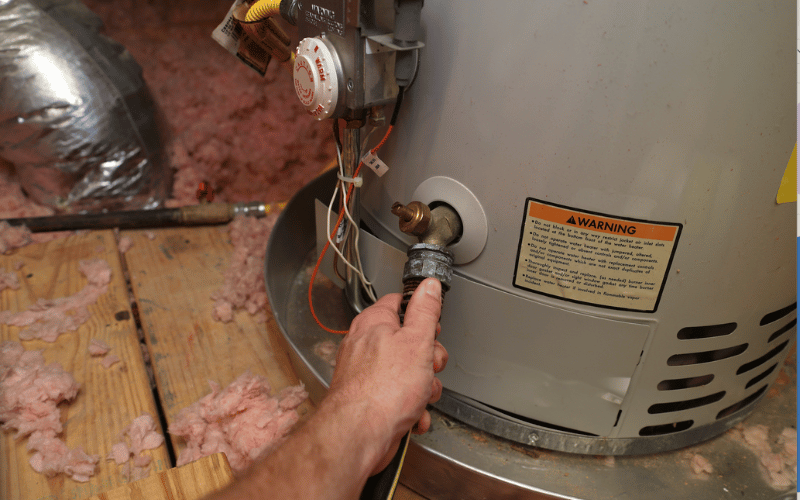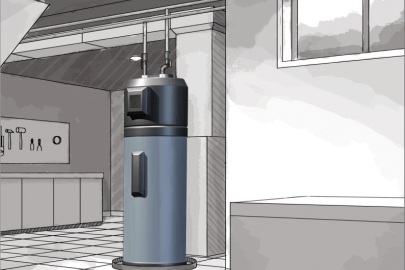Important Maintenance Tips for Your Home's Hot Water System
Important Maintenance Tips for Your Home's Hot Water System
Blog Article
What are your thoughts about How to Maintain a Hot Water Heater in a Few Simple Steps?

Hot water is crucial for everyday convenience, whether it's for a rejuvenating shower or cleaning recipes. To guarantee your hot water system runs successfully and lasts longer, routine upkeep is key. This article supplies useful ideas and insights on exactly how to preserve your home's warm water system to avoid disruptions and costly repair work.
Intro
Maintaining your home's warm water system could appear difficult, yet with a few basic actions, you can ensure it operates smoothly for several years to come. This guide covers every little thing from recognizing your hot water system to DIY upkeep tips and knowing when to employ specialist help.
Significance of Preserving Your Warm Water System
Routine upkeep not only expands the life expectancy of your warm water system but additionally guarantees it runs efficiently. Overlooking maintenance can cause lowered performance, higher energy expenses, and even early failing of the system.
Signs Your Hot Water System Requirements Upkeep
Understanding when your warm water system requires focus can prevent significant problems. Watch out for signs such as inconsistent water temperature level, odd noises from the heater, or rustic water.
Recognizing Your Hot Water System
Prior to diving into upkeep jobs, it's helpful to recognize the standard parts of your hot water system. Generally, this includes the hot water heater itself, pipes, anode rods, and temperature controls.
Month-to-month Upkeep Tasks
Routine monthly checks can help capture small issues prior to they intensify.
Purging the Hot Water Heater
Purging your hot water heater removes sediment accumulation, enhancing effectiveness and extending its life.
Checking and Changing Anode Rods
Anode poles stop rust inside the storage tank. Examining and changing them when worn is vital.
Evaluating and Adjusting Temperature Level Setups
Changing the temperature level setups ensures ideal performance and safety and security.
Do It Yourself Tips for Maintenance
You can carry out several upkeep jobs on your own to keep your hot water system in top problem.
Looking for Leakages
On a regular basis examine pipes and links for leakages, as these can result in water damage and greater costs.
Checking Pressure Relief Valves
Checking the stress relief valve guarantees it works correctly and protects against extreme stress buildup.
Shielding Pipelines
Protecting warm water pipes reduces warm loss and can save power.
When to Call an Expert
While DIY upkeep is valuable, some problems call for expert knowledge.
Facility Issues Requiring Professional Aid
Examples consist of major leakages, electrical issues, or if your water heater is continually underperforming.
Routine Specialist Maintenance Benefits
Specialist maintenance can consist of extensive inspections, tune-ups, and making sure compliance with safety and security requirements.
Conclusion
Routine upkeep of your home's hot water system is crucial for efficiency, long life, and cost financial savings. By following these ideas and knowing when to look for professional assistance, you can make sure a dependable supply of warm water without unexpected disturbances.
Water Heater Maintenance: The Basics
Maintaining your water heater will ensure it operates efficiently and has a longer lifespan. Neglecting regular maintenance can lead to costly repairs and an even bigger chunk of your savings if you have to replace it sooner than necessary. But there’s good news: Most water heater maintenance tasks are relatively simple and easy for homeowners with basic DIY skills.
Flush the Water Heater
Over time, sediment and minerals can build up in the tank, reducing its efficiency and potentially causing damage. To flush the tank, turn off the power or gas supply, attach a hose to the drain valve near the bottom and open the valve to drain the water until it runs clear. Ideally, flush the tank annually.
Replace the Anode Rod
The anode rod is a sacrificial metal rod that helps prevent corrosion inside the tank. Inspect and replace it every three to five years or per the manufacturer's recommendation. To replace the anode rod, turn off the power or gas supply, drain a few gallons of water from the tank, unscrew the old rod and replace it with a new one. If the anode rod is significantly corroded or covered in calcium buildup, it's a sign the water heater may need to be replaced soon.
Tune-Up
A yearly tune-up can help identify potential issues and ensure your water heater operates at peak efficiency. This typically involves checking the thermostat, burner assembly (for gas heaters) and any other components specified by the manufacturer. During a tune-up, the technician may also clean the burner and adjust the pilot light (for gas heaters) or examine the heating elements (for electric heaters).
How to Maintain Your Water Heater
Insulate the tank. Insulating the tank can improve energy efficiency and reduce heat loss, saving you money on energy bills. You can purchase precut insulation blankets designed specifically for water heaters or use standard fiberglass insulation wrapped securely around the tank. Check the temperature. The recommended water temperature for most households is around 120 degrees Fahrenheit (49 degrees Celsius). Higher temperatures can increase energy costs and potentially cause scalding. Use a kitchen thermometer to check the temperature at the faucet nearest the water heater. Monitor water pressure. Excessive water pressure can strain the water heater and cause leaks or even tank failure. Install a pressure-reducing valve if necessary. The ideal water pressure range is between 60 and 70 PSI (pounds per square inch). Test the temperature and pressure (T&P) relief valve. The T&P relief valve is a safety feature that releases pressure if the tank gets too hot or the pressure builds up too high. Test it annually by lifting the lever and allowing a small amount of water to release. Replace the valve if it doesn't release water or reseal properly. Check for leaks. Regularly inspect the tank, pipes and fittings for leaks or corrosion. Deal with issues promptly to prevent further damage. Even a small leak can lead to significant water damage over time. Consider a tankless water heater. If your traditional tank-style water heater is nearing the end of its lifespan ( typically 10 years), consider replacing it with a tankless water heater. These units heat water on demand, reducing standby energy losses and potentially saving you money on your energy bills. Schedule professional maintenance. While homeowners can perform many water heater maintenance tasks, it's still a good idea to schedule professional maintenance every few years. A plumber or HVAC technician can thoroughly inspect the unit, identify potential issues and ensure it operates safely and efficiently. https://www.homeserve.com/en-us/blog/home-improvement/hot-water-heater-maintanence/

Hopefully you enjoyed reading our section about Water Heater Maintenance Tips You Can't Afford to Forget. Thanks so much for taking a few minutes to read our post. Kindly set aside a second to share this entry if you enjoyed reading it. We value reading our article about Tips For Maintaining Your Hot Water Heater.
Click For More Information Report this page